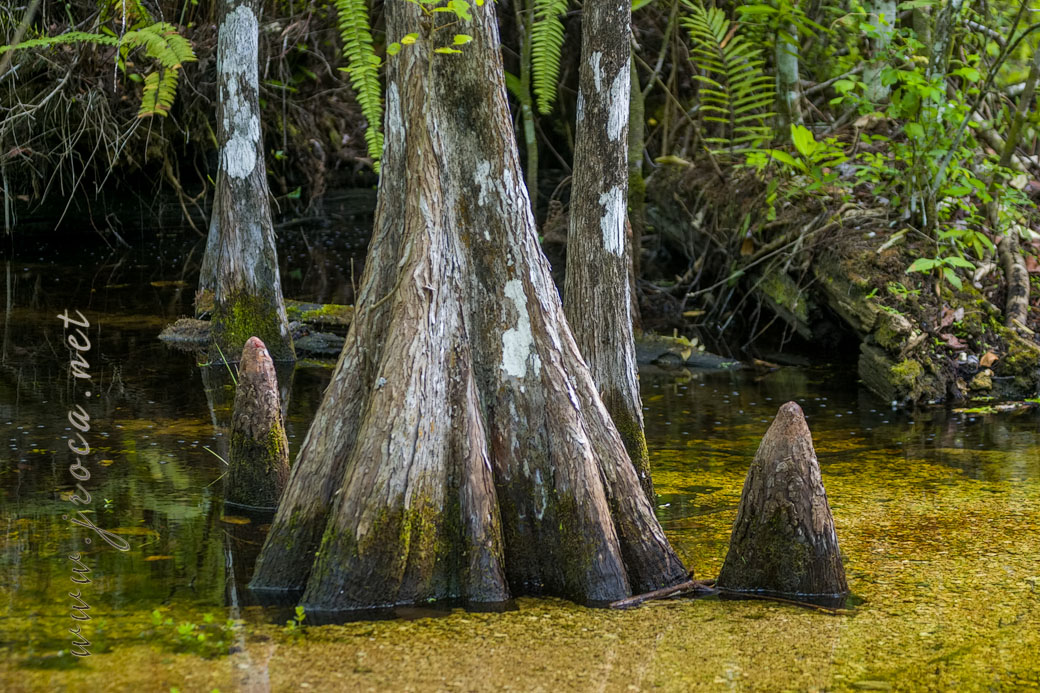Generally, Florida has seven floral zones: flatwoods, scrublands, grassy swamps, savannas, salt marshes, hardwood forests (hammocks), and pinelands. Flatwoods consist of open forests and an abundance of flowers, including more than 60 varieties of orchid. Small sand pines are common in the scrublands; other trees here are the saw palmetto, blackjack, and water oak. The savannas of central Florida support water lettuce, American lotus, and water hyacinth. North Florida’s flora includes longleaf and other pines, oaks, and cypresses; one giant seminole cypress is thought to be 3,500 years old. The state is known for its wide variety of palms, but only 15 are native, and more than 100 have been introduced; common types include royal and coconut. Although pine has the most commercial importance, dense mangrove thickets grow along the lower coastal regions, and northern hardwood forests include varieties of rattan, magnolia, and oak. Numerous rare plants have been introduced, among them bougainvillea and oleander. All species of cacti and orchids are regarded as threatened, as are most types of ferns and palms. Endangered and threatened species, numbering 54 as of August 2003, include the key tree-cactus, Chapman rhododendron, Harper’s beauty, fragrant prickly-apple, two species of pawpaw, four species of mint, and Florida torreya tree.
Florida once claimed more than 80 land mammals. The whitetailed deer, wild hog, and gray fox can still be found in the wild; such small mammals as the raccoon, eastern gray and fox squirrels, and cottontail and swamp rabbits remain common. Florida’s bird population includes many resident and migratory species. The mockingbird was named the state bird in 1927; among game birds are the bobwhite quail, wild turkey, and at least 30 duck species. Several varieties of heron are found, as well as coastal birds such as gulls, pelicans, and frigates. The Arctic tern stops in Florida during its remarkable annual migration between the North and South poles.
Common Florida reptiles are the diamondback rattler and various water snakes. Turtle species include mud, green, and loggerhead, and various lizards abound. More than 300 native butterflies have been identified. The peninsula is famous for its marine life: scores of freshwater and saltwater fish, rays, shrimps, live coral reefs, and marine worms.
All of Florida’s lands have been declared sanctuaries for the bald eagle, of which Florida has about 350 pair (2nd only to Alaska among the 50 states). The state’s unusually long list of threatened and endangered wildlife (57 species) as of August 2003 included the American crocodile, shortnose sturgeon, six species of sea turtle, red-cockaded woodpecker, Florida panther, key deer, West Indian (Florida) manatee, six species of mouse, Key Largo woodrat, Everglade snail kite, two species of sparrow, Atlantic salt marsh snake, eastern indigo snake, Okaloosa darter, Stock Island tree snail, and Schaus swallowtail butterfly.


